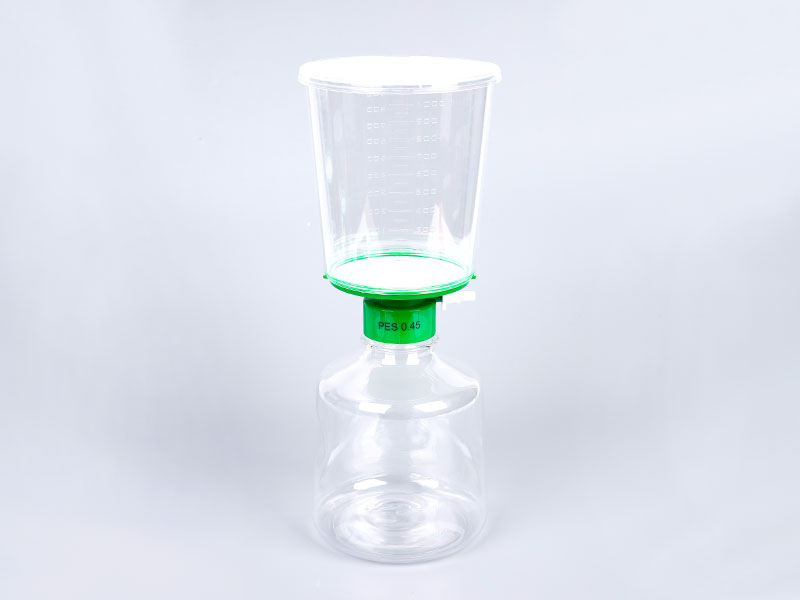Choosing the Right Membrane: PES, CA, or PVDF for Aseptic Filtration
When it comes to aseptic vacuum filtration in laboratory settings, selecting the appropriate membrane material is crucial for achieving optimal filtration efficiency and compatibility with various biological fluids. Among the most commonly used materials for membranes are polyethersulfone (PES), cellulose acetate (CA), and polyvinylidene fluoride (PVDF). Each of these materials has unique properties that influence their performance in different applications, from microbiological studies to pharmaceutical processes. Understanding how they compare can significantly impact laboratory workflows and outcomes.
Polyethersulfone (PES) membranes are celebrated for their superior flow rates and low protein binding capabilities, making them an excellent choice for applications where sample integrity is paramount. With protein adsorption levels typically below 1.5%, PES is particularly beneficial for filtering biological fluids, as it minimizes the risk of altering sample composition or losing valuable analytes. This material is well-suited for applications involving serum or cell culture media, where maintaining the original characteristics of the fluid is critical. Furthermore, PES membranes exhibit high thermal and chemical stability, allowing them to withstand aggressive cleaning procedures and harsh solvents, which extends their usability in a variety of laboratory settings.
In contrast, cellulose acetate (CA) membranes are often favored for their biocompatibility and environmental friendliness, as they are derived from natural sources. CA membranes typically provide a good balance between filtration efficiency and low-cost production, making them a popular choice for laboratories focused on sustainability. However, while they are effective for many biological applications, they can sometimes present challenges regarding fouling and slower flow rates, particularly when filtering complex fluids with high protein concentrations. CA membranes also require careful handling, as they are more sensitive to pH changes and organic solvents compared to PES and PVDF membranes, which could limit their application in some contexts.

On the other hand, polyvinylidene fluoride (PVDF) membranes stand out for their hydrophobic nature and exceptional chemical resistance. This makes PVDF an excellent option for applications where solvents or harsh chemicals are involved, as they maintain integrity under challenging conditions. PVDF membranes are particularly advantageous for filtering organic solvents or acidic solutions, where PES and CA might struggle. While PVDF membranes typically demonstrate good flow rates, they may not be as effective at retaining small particulates or bacteria compared to PES. Thus, the choice of PVDF would depend on the specific requirements of the filtration task at hand, particularly in applications involving aggressive solvents or where chemical compatibility is a concern.
Ultimately, the decision between PES, CA, and PVDF membranes hinges on a laboratory’s specific needs, including the type of biological fluid being filtered, the required filtration efficiency, and any environmental or safety considerations. Each membrane material brings its own set of strengths and limitations. For instance, if a lab prioritizes minimizing sample loss and achieving high purity, PES would likely be the ideal choice. Conversely, for laboratories focused on sustainability or those working with less complex fluids, CA might be more appealing. PVDF offers a robust solution for applications demanding high chemical resistance, especially in the presence of aggressive solvents.
For more information, please call us at +86-0571-87993109 or email us at hzbioland@126.com.
Aseptic vacuum filters, like Bioland™ disposable vacuum filtration units, are designed for high-effi...
Whether used in the food hygiene industry, water monitoring, or research labs, selecting the right m...
Narrow-mouth reagent bottles are essential tools in laboratories, offering precise storage solutions...
In laboratory diagnostics, particularly in PCR (Polymerase Chain Reaction) testing, efficiency is pa...
When working with the Bioland™ Cell Shaker, one of the most crucial factors in ensuring successful c...
Polymerase chain reaction (PCR) is one of the most vital techniques in molecular biology, allowing s...

 中文简体
中文简体 English
English Español
Español русский
русский











